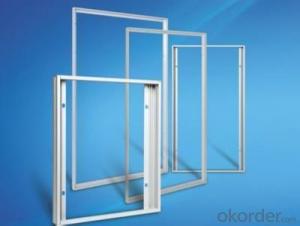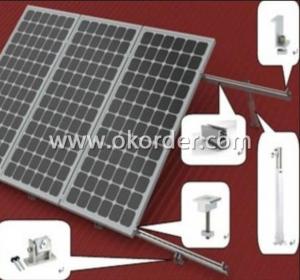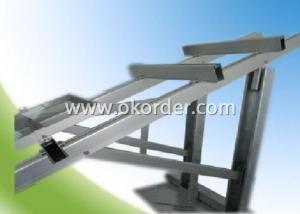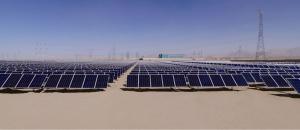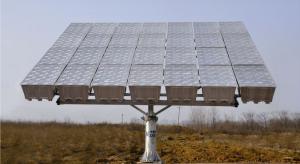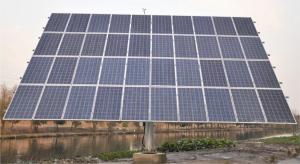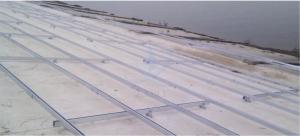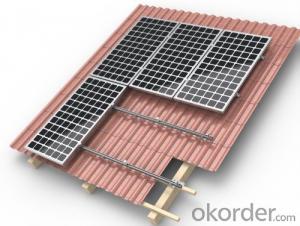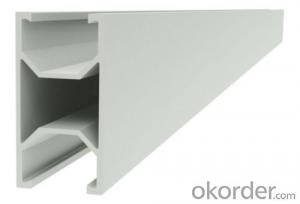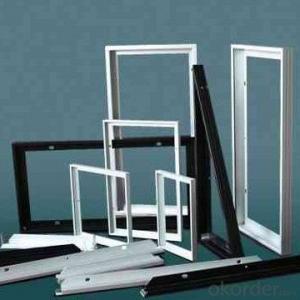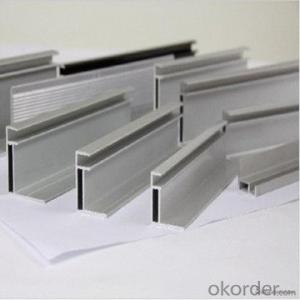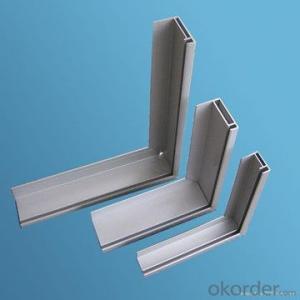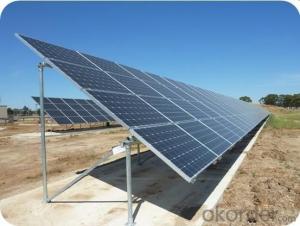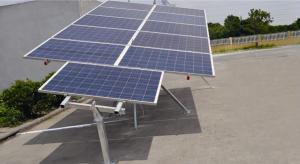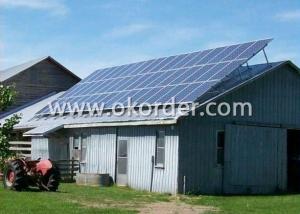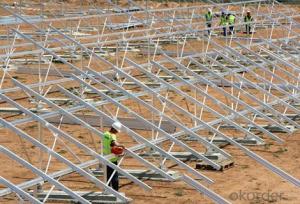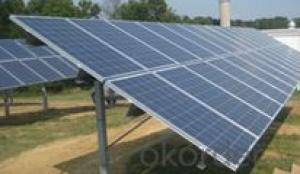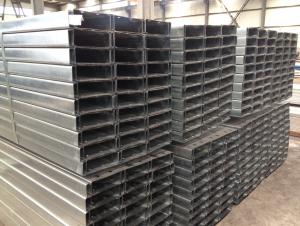Solar aluminum alloy frame1956*992*40*35
- Loading Port:
- China Main Port
- Payment Terms:
- TT OR LC
- Min Order Qty:
- -
- Supply Capability:
- -
OKorder Service Pledge
OKorder Financial Service
You Might Also Like
UseEdit
Fixed,sealedsolar modules,strongenhancementshelpprolong life, easy to transportand install.
Advantagesedit
1quality.Complete quality controlsystemto ensure thequality of the product.2productionis superior.Specialized productionand stable quality,able toprovide customers withlarge quantitiesof varioustypes ofaluminumborder.3well-equipped.FromJapan,the main productionequipmentimported from Germany,mold well,accuracy up to0.02mm.
Solarphotovoltaic applicationsinthe field offrameadvantages:
Ananti-corrosion,oxidation resistanceand strong;
2strength andsolid and strong;
Strongthreetensileproperties;
4elastic modulus, rigidity,metal fatiguevalue is high;
5transport, easy to install,evenscratchedthe surfaceoxidationdoes not produce, does not affectperformance;
Sixdifferentselectionthrougheasyto adapt tovarious environments;
7service life of30-50 years.
Sizeeditor
1) 35 * 35mm,suitable for80-180wattsolar modules;
2) 40 * 35mm,suitable for200 - 300wattsolar modules;
3) 50 * 35mm,suitable for160-220wattsolar modules;
4)Many othercustomsizes,such as, 40 * 28mm, 40 * 30mm, 40 * 35mm, 42 * 35mm, 45 * 35mm, 46 * 30mm, 46 * 35mm 46 * 40mm, 46 * 48mm, 46 * 50mm, 46* 60mm, 60 * 35mm,and the like.
Common specificationsare:
1956 * 992 * 50mm
1650 * 992 * 45mm
1640 * 992 * 45mm
1580 * 808 * 40mm
1576 * 808 * 40mm
1482 * 670 * 40mm
Otherlengthscan beproducedaccording to customer requirementsframe
Two types ofediting
1)90Angle
2)45angle
5Surface Treatmentedit
1)anodized(silver,black, silver,····)(thicknessAA10, AA15, AA18, AA20)
2)electrophoresis(white,black)(thickness≥15, ≥16, ≥18, ≥20)
3)powder coating, PVDF,sandblasting, etc.
6 Standardeditor
GB / T5237 - 2004, Q / 320 281PDW01-2008
7specificationeditor
Specificsizescan be designedaccording to customer demand.
- Q: Can a solar mounting system be used in areas with frequent power outages?
- Yes, a solar mounting system can be used in areas with frequent power outages. Solar panels are independent power generators that rely on sunlight to produce electricity. Therefore, even during power outages, solar panels can continue to generate electricity as long as there is sunlight available. However, it is important to note that unless the solar panels are connected to a battery storage system, the electricity generated during power outages will not be available for immediate use and will only be accessible when the grid power is restored.
- Q: Are there any specific requirements for clamps when using a solar mounting system on a standing seam metal roof?
- Yes, there are specific requirements for clamps when using a solar mounting system on a standing seam metal roof. The clamps should be designed specifically for standing seam roofs to ensure a secure and watertight connection. They should be compatible with the specific profile and dimensions of the standing seam, and should have sufficient strength to withstand the wind and snow loads in the area. Additionally, the clamps should be made of materials that are corrosion resistant to protect against weathering and ensure the long-term durability of the solar installation.
- Q: Can a solar mounting system be used with floating solar panels?
- Yes, a solar mounting system can be used with floating solar panels. Floating solar panels are designed to float on bodies of water and generate electricity using solar power. These panels can be anchored to the waterbed using a specially designed mounting system that ensures stability and allows for efficient energy production.
- Q: Can a solar mounting system be used in areas with high snow load?
- Yes, a solar mounting system can be used in areas with high snow load. However, it is important to choose a mounting system that is specifically designed to withstand heavy snow loads. These systems typically have reinforced structures and snow-shedding capabilities to prevent excessive snow accumulation and potential damage to the solar panels. Additionally, regular maintenance and snow removal may be required to ensure optimal performance in snowy conditions.
- Q: Can a solar mounting system be installed on a historic or protected building?
- Yes, a solar mounting system can be installed on a historic or protected building. However, it may require careful planning and design considerations to ensure that the system does not damage or alter the historic integrity of the building. It is important to consult with professionals who specialize in historic preservation and solar installations to ensure that the system is installed in a way that respects the building's architecture and complies with any regulations or restrictions in place.
- Q: How does shading affect the performance of a solar mounting system?
- Shading significantly impacts the performance of a solar mounting system as it reduces the amount of sunlight reaching the solar panels. Even partial shading on any part of the solar panel can lead to a decrease in energy production, as it disrupts the flow of electrons and creates hotspots, which can damage the panels. Therefore, shading should be minimized or avoided altogether to maximize the efficiency and overall performance of the solar mounting system.
- Q: Can a solar mounting system be installed on a floating platform in water?
- Yes, a solar mounting system can be installed on a floating platform in water. Floating solar systems, also known as floating photovoltaic (FPV) systems, are increasingly being used to generate solar energy on bodies of water. These systems are designed to withstand the unique challenges posed by water, such as waves, wind, and corrosion. They offer several advantages, including increased land availability, reduced evaporation, and higher energy yield due to the cooling effect of water.
- Q: What are the best practices for installing a solar mounting system?
- The best practices for installing a solar mounting system include conducting a thorough site assessment to determine the optimal location, angle, and orientation for maximum sunlight exposure. It is essential to ensure proper structural integrity of the mounting system by following manufacturer guidelines and using high-quality materials. Securely fastening the solar panels to the mounting system while considering weather conditions, such as wind and snow loads, is crucial. Additionally, proper waterproofing and grounding techniques should be implemented to ensure safety and long-term durability. Regular inspections and maintenance, including checking for any loose connections or damage, are essential to ensure optimal performance and longevity of the solar mounting system.
- Q: How is a solar mounting system installed?
- A solar mounting system is typically installed by first assessing the roof or ground area where the solar panels will be placed. Then, the mounting structure is secured using appropriate methods such as drilling, anchoring, or ballasting. Once the structure is in place, the solar panels are attached to the mounting system using brackets or clamps. Finally, the wiring and electrical connections are made to complete the installation process.
- Q: Can a solar mounting system be used with solar-powered weather stations?
- Yes, a solar mounting system can be used with solar-powered weather stations. The solar mounting system provides a secure and efficient way to mount solar panels, which are used to power the weather stations. This ensures that the weather stations have a constant and reliable source of energy from the sun.
Send your message to us
Solar aluminum alloy frame1956*992*40*35
- Loading Port:
- China Main Port
- Payment Terms:
- TT OR LC
- Min Order Qty:
- -
- Supply Capability:
- -
OKorder Service Pledge
OKorder Financial Service
Similar products
Hot products
Hot Searches
Related keywords
